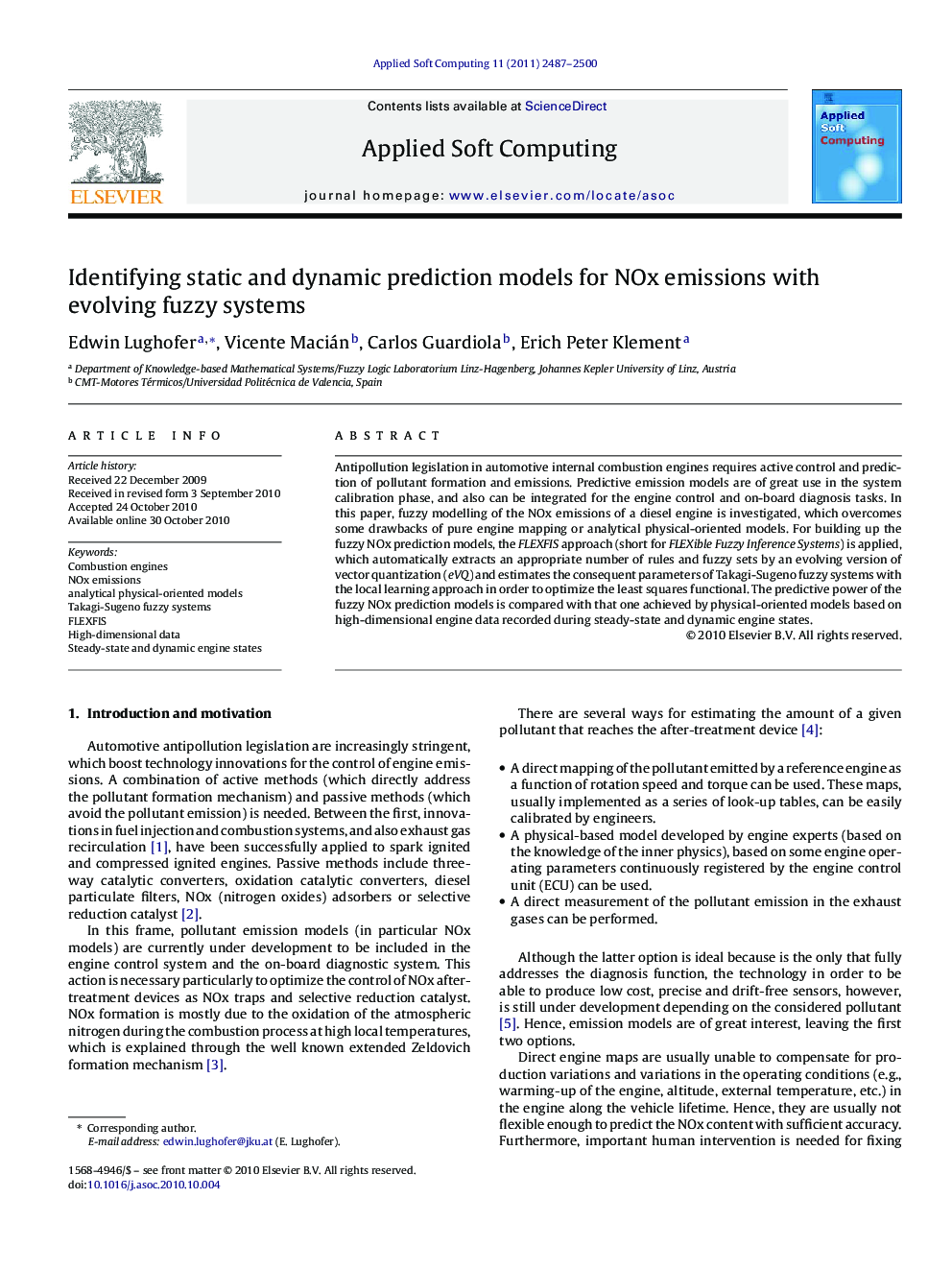| Article ID | Journal | Published Year | Pages | File Type |
|---|---|---|---|---|
| 497069 | Applied Soft Computing | 2011 | 14 Pages |
Antipollution legislation in automotive internal combustion engines requires active control and prediction of pollutant formation and emissions. Predictive emission models are of great use in the system calibration phase, and also can be integrated for the engine control and on-board diagnosis tasks. In this paper, fuzzy modelling of the NOx emissions of a diesel engine is investigated, which overcomes some drawbacks of pure engine mapping or analytical physical-oriented models. For building up the fuzzy NOx prediction models, the FLEXFIS approach (short for FLEXible Fuzzy Inference Systems) is applied, which automatically extracts an appropriate number of rules and fuzzy sets by an evolving version of vector quantization (eVQ) and estimates the consequent parameters of Takagi-Sugeno fuzzy systems with the local learning approach in order to optimize the least squares functional. The predictive power of the fuzzy NOx prediction models is compared with that one achieved by physical-oriented models based on high-dimensional engine data recorded during steady-state and dynamic engine states.
